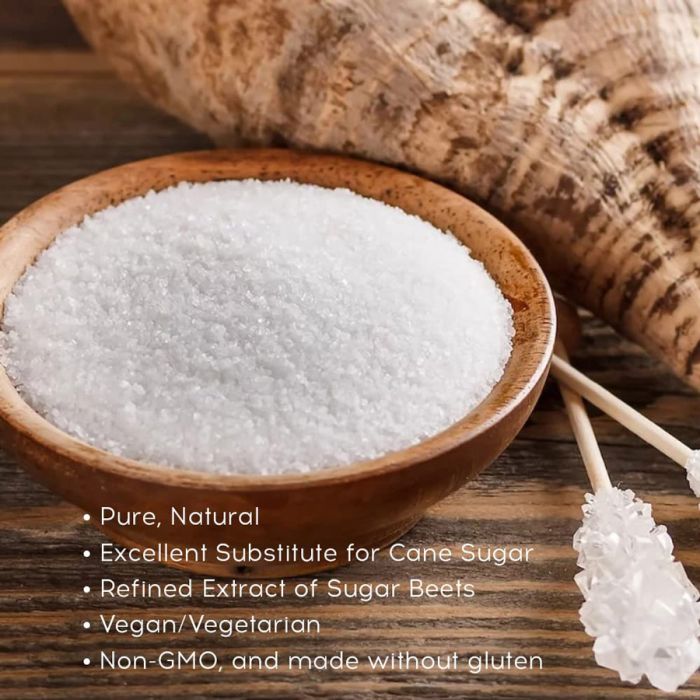Discover the Uses and Conveniences of Beet Sugar Vs Cane Sugar in Your Daily Diet Regimen
Checking out the distinctive high qualities of beet and cane sugar reveals even more than just their sweetening capabilities; it highlights their unique effect on wellness and cookeries. Beet sugar, known for its subtle flavor, is often favored in fragile treats, whereas cane sugar, with its tip of molasses, includes richness to durable recipes. Each type holds its own dietary profile and glycemic effects, inviting a deeper understanding of their duties in a balanced diet and lasting intake practices.
Origin and Manufacturing Procedures of Beet and Cane Sugar

The distinctive climates and dirt kinds required for expanding sugar beets and sugarcane add to differences in their growing methods and geographic distribution, influencing the economics and sustainability of their manufacturing. beet sugar vs cane sugar.
Nutritional Contrast In Between Beet Sugar and Cane Sugar
Regardless of originating from different plants, beet sugar and cane sugar are nutritionally very similar, both primarily including sucrose. Each provides regarding 4 calories per gram, translating to approximately 16 calories per tsp. Structurally, both sugars are made up of approximately 99.95% sucrose, with marginal amounts of other compounds like moisture and trace element, which do not substantially modify their dietary profiles.

Eventually, when selecting between beet sugar and cane sugar based on dietary material alone, both deal the same advantages and drawbacks as they are basically kinds of the very same particle-- sucrose, supplying quick power without other nutrients.
Effect on Wellness: Glycemic Index and Caloric Material
Exploring even more into the impacts of beet sugar and cane sugar on wellness, it is vital to consider their glycemic index and caloric content. The glycemic index (GI) of both beet and cane sugar is around 65, categorizing them as high-GI foods, which can cause quick spikes in blood glucose degrees.
Each kind of sugar has Recommended Reading about 4 calories per gram, making their caloric content equivalent. For those monitoring calorie intake, particularly when managing weight or metabolic wellness conditions, recognizing this equivalence is vital (beet sugar vs cane sugar). Nevertheless, too much intake of any kind of high-calorie, high-GI food can add to health and wellness issues such as excessive weight, heart illness, and insulin resistance.
Environmental and Economic Factors To Consider of Sugar Production
Beyond health and wellness impacts, the production of beet and cane sugar additionally elevates considerable ecological and financial concerns. Sugar beet cultivation tends to need cooler environments and has a lower geographical impact compared to sugar cane, which thrives in exotic areas.
In addition, using chemicals and fertilizers in both beet and cane sugar growing can bring about dirt degradation and pollution, more influencing biodiversity and local water bodies (beet sugar vs cane sugar). The selection between cultivating sugar beet or cane commonly rests on local ecological conditions and financial variables, making the sustainability of sugar production a complex problem
Culinary Applications and Flavor Differences
While the ecological and financial facets of sugar manufacturing are without a doubt considerable, the option between beet and cane sugar likewise affects cooking applications More Bonuses and taste accounts. Beet sugar, derived from the sugar beet plant, is understood for its extremely neutral preference.
Cane sugar, drawn out from why not check here sugarcane, commonly retains molasses traces, which pass on a distinct splendor and deepness. The slight variation in wetness material in between beet and cane sugar can influence the texture and consistency of dishes, making cane sugar a favored option for particular dishes that profit from its one-of-a-kind residential properties.

Verdict
In final thought, both beet and cane sugar have unique beginnings and manufacturing processes, using similar nutritional profiles with slight differences in sodium content and taste. While their influence on wellness, particularly concerning glycemic index and calories, is comparable, the option in between them often comes down to environmental, economic elements, and details cooking demands. Comprehending these elements can assist customers in making informed choices that align with their wellness objectives and taste preferences.